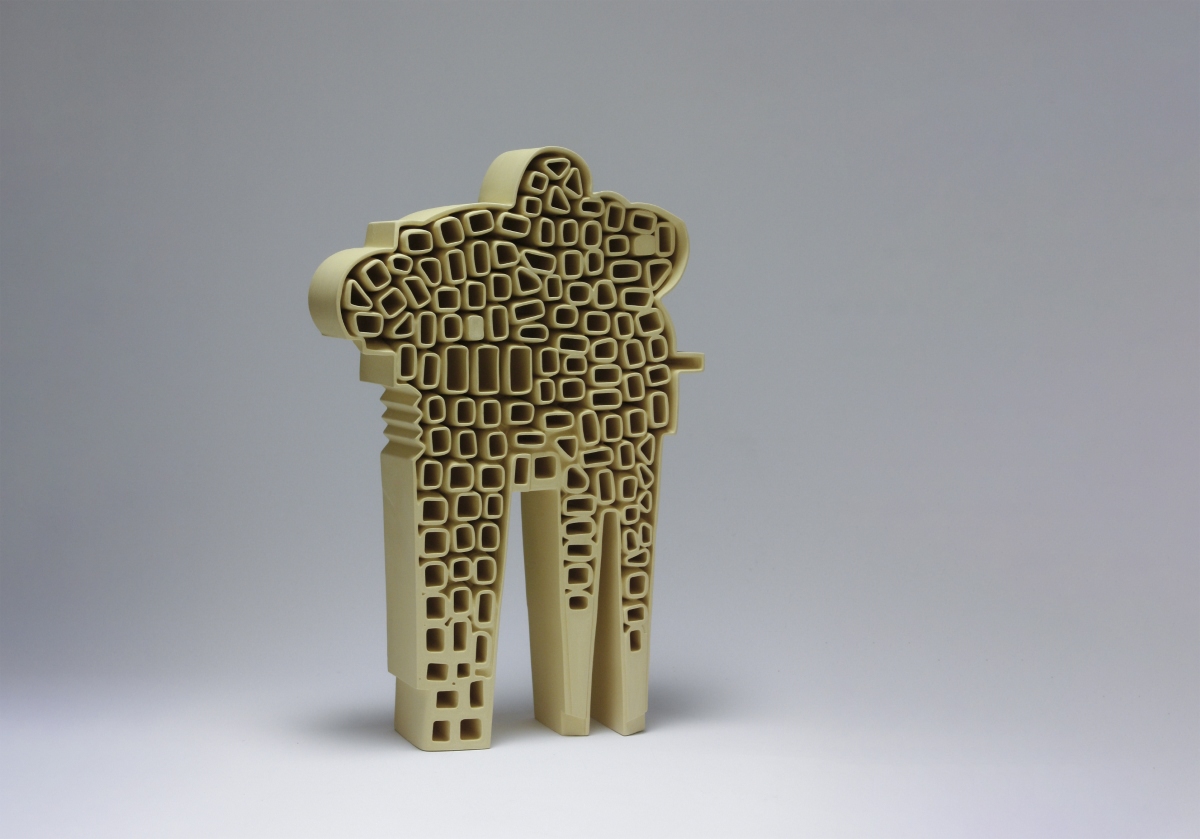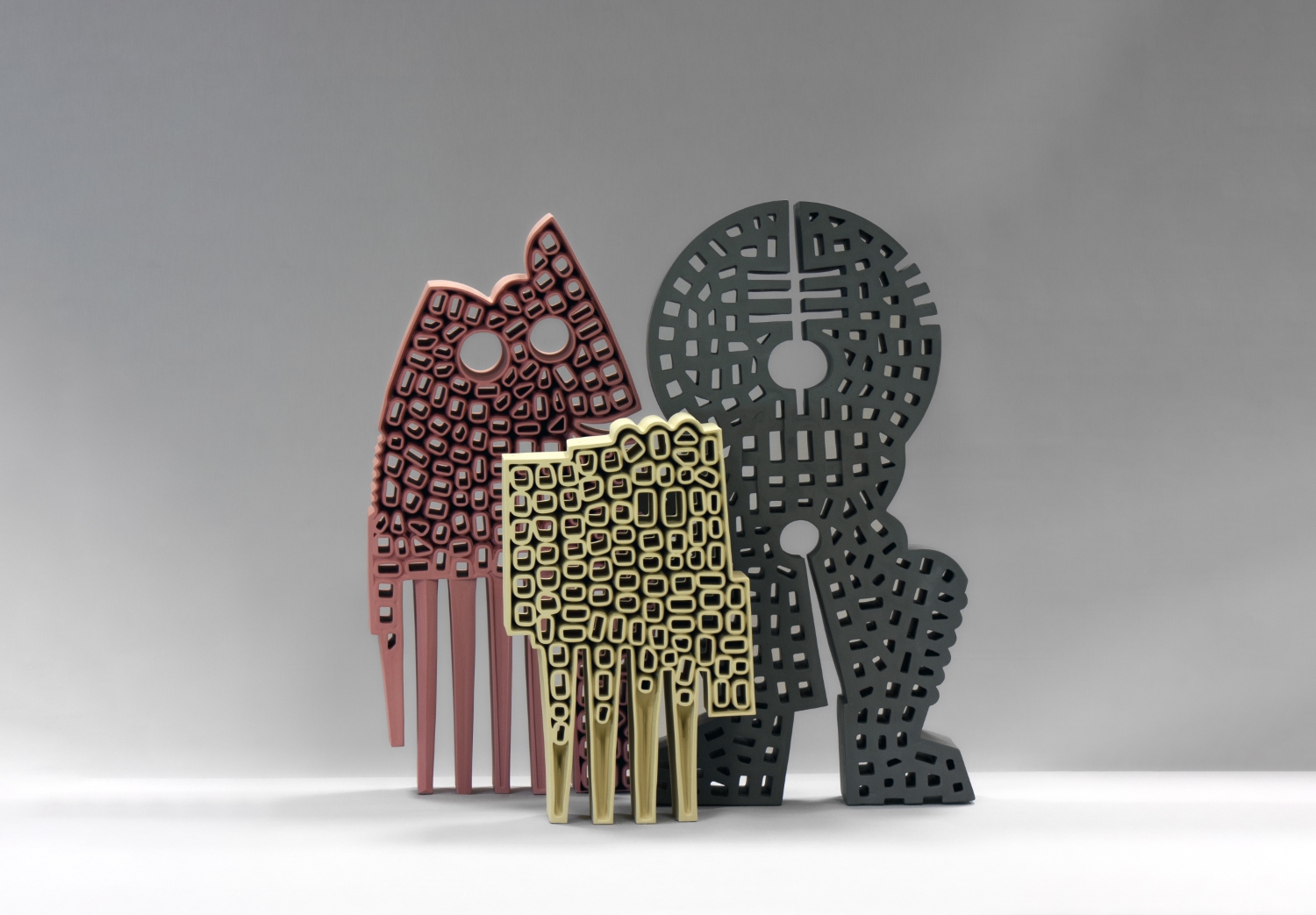Hasan Şahbaz is a ceramic artist born in 1975 in Akşehir, Konya (Turkey). He graduated in 2001 with a BFA from the Ceramics Department of Anadolu University Fine Arts Faculty, Eskişehir, and began working as a lecturer at the Ceramics Department of Afyon Kocatepe University Fine Arts Faculty. In 2006, he earned a master’s degree from Anadolu University’s Institute of Social Sciences, Ceramics Department. In August 2024, he completed his “Proficiency in Art” education at Hacettepe University’s Institute of Fine Arts, with a thesis titled Construction of the Body: Figure.
Şahbaz has held nine solo exhibitions and participated as an invited artist in numerous events across Japan, Latvia, Finland, Germany, Romania, Moldova, Tunisia, and Turkey. He has contributed to over 100 national and international exhibitions, symposiums, workshops, biennials, and competitive exhibitions worldwide. His work has been featured in prominent ceramic publications, including New Ceramics, Seramik Türkiye, De Kleine K, and Infocerámica.
He has received multiple awards in national and international ceramics competitions. Notable accolades include an “Honorable Mention” at the 12th MINO International Ceramics Competition (2021, Japan), 1st Prize at the 38th CICA International L’Alcora Ceramics Competition (2018, Spain), the “Bronze Award” at the 1st International Martinson Ceramic Awards (2016, Latvia), an “Honorable Mention” at the 3rd Cluj Ceramics Biennial (2017, Romania), and an “Honorable Mention” at the 8th Gyeonggi International Ceramics Biennial (2015, Korea). Additionally, he has received the “Success Award” five times in the Ceramics category of the Ministry of Culture and Tourism State Painting and Sculpture Competition in Turkey.
Şahbaz focuses on creating original works through innovative clay-shaping techniques. In his recent work, he explores figurative ceramic sculptures using colored stoneware casting clay and multi-piece plaster molding techniques.
Visit Hasan Şahbaz’s website and Instagram page.
Featured work
Silhouette Bodies, 2015-2023

Allegorical Figures, 2017-2020

Organic Objects, 2011-2017

Art is a field of discovery, questioning, understanding, and learning—about ourselves and everything that exists beyond us. I have been working in this field for nearly twenty-five years. Through my works, I strive to create and share an original space without repeating myself. I believe that originality is achieved through individual discoveries. Even within a technique or method that is widely known and used, we can maintain originality by cultivating our own unique approaches. I feel very fortunate to have art as a central part of my life and to live a life immersed in art.
My works are allegorical and figurative, referencing human and animal forms created using multi-part plaster molds. The plaster mold technique is a widely known method, but in my practice, I use more than a hundred plaster pieces in a complex interplay of negative and positive relationships. I have developed my own style within this familiar technique. However, while my methods are highly specialized, I want my works to stand out for what they express rather than for their technical execution. I aim for my works to evoke multiple interpretations, and they often do. With their dozens of small holes, my pieces offer varying perspectives depending on the viewer’s angle. This gives my works a dynamic, constructive structure.
A period of my childhood was spent playing in an area where hundreds and thousands of briquettes were produced directly across from our house, which became intertwined with our playground. The field, filled with freshly poured briquettes left to dry, neatly stacked in rows or piles, felt like a massive playground. Looking back, it was as if I was surrounded by a giant Lego set. The geometric constructions, the interplay of light and shadow, and the sense of depth created by the briquettes stacked side by side or on top of each other left a lasting impression on me at that young age, and they continue to influence me today. I am not sure how this experience manifests in my work, but when I reflect on it, it feels like a key reference point. Whenever I sketch or create, these subconscious images seem to resurface, guiding my thoughts and my art. This connection explains why I preferred square notebooks during my school years.
Who knows? Perhaps, as a reflection of those early experiences, I have always been drawn to city plans, settlement patterns, architectural structures, and their geometric shapes and forms. As a result, geometric order is a recurring theme in my works, serving as a common denominator from which my creations emerge. Due to this strong organic connection to the past, regardless of the subject matter, each of my works is intrinsically linked to its predecessors, and my future creations will likely continue this lineage.













